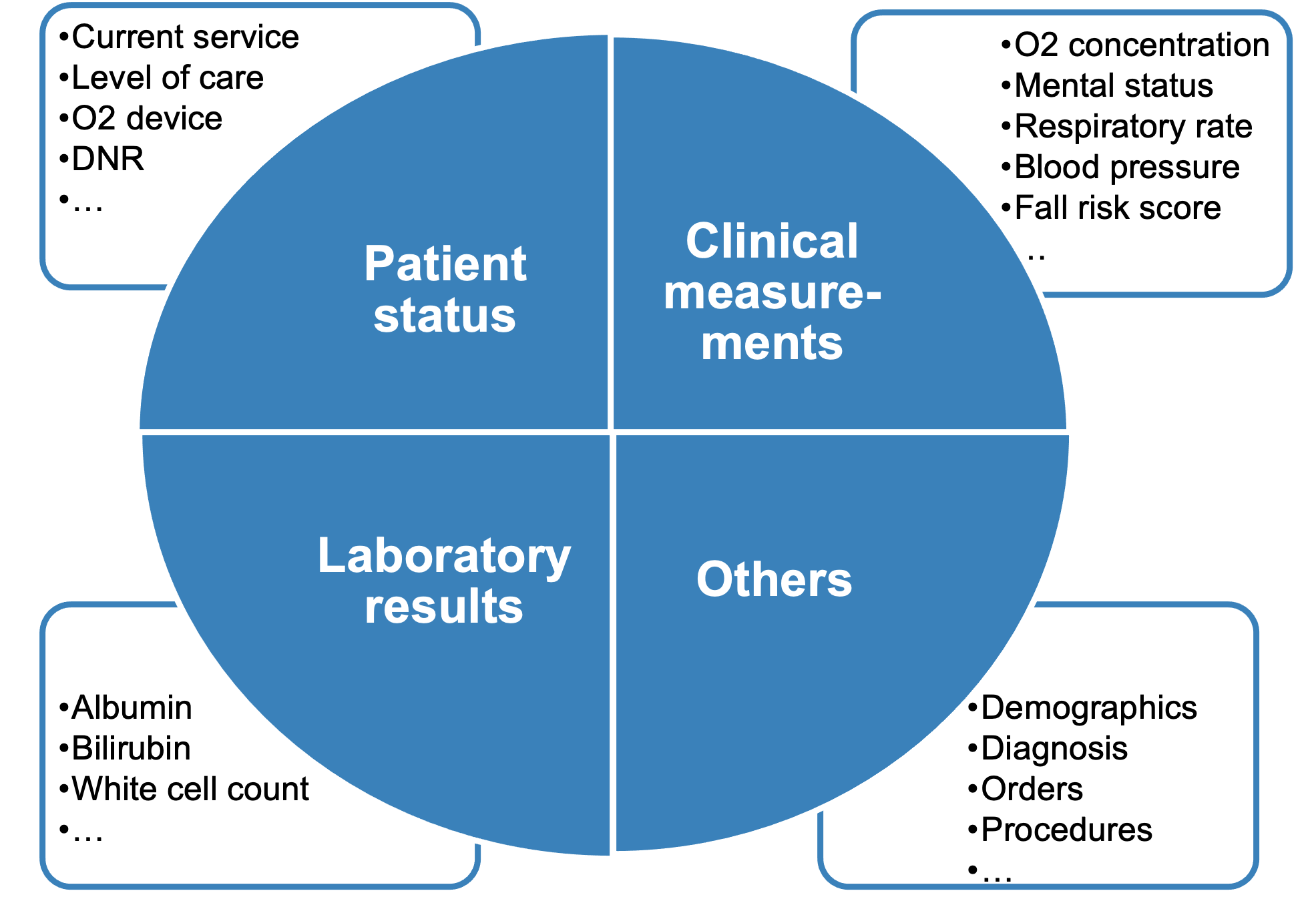Physicians take better care of their patients with H2O’s algorithm by predicting daily patient discharge or mortality with an industry-leading accuracy of over 90%
September 2022
Problem & Motivation
Without machine learning solutions, physicians and hospital managers have difficulty accurately predicting daily patient discharge and mortality. The consequence of inaccurate predictions is less time with patients in need, empty rooms, slower admission of new patients, and wasted operational costs. H2O recognizes this as a core challenge in patient care today and addresses it with the Patient Length of Stay (LOS) solution that minimizes hospital operation inefficiencies and improves overall patient care.
Specifically, H2O’s algorithm predicts every patient’s operational characteristics, like mortality risk as shown in the example below, to provide physicians with advanced clinical and operational assistance to better serve their patients. In a recent production, a hospital using H2O’s algorithm was able to predict patient mortality within 48 hours at over 90% accuracy. The algorithm’s patient discharge prediction within 48 hours was also 20% more accurate than the physician’s prediction. Thanks to the high accuracy of the LOS solution, the hospital successfully reversed a trend of increasing patient length of stay from +7% to -4% within half a year, while still maintaining high quality care. H2O’s LOS solution is an invaluable tool for physicians to treat their patients quickly and more efficiently.
End-To-End Pipeline
The Patient Length of Stay solution offers end-to-end services, ranging from extracting data to returning actionable plans that physicians can evaluate and then implement. The fundamental machine learning model is built on a productive loop that allows for constant optimization of the algorithm by incorporating physician feedback. This ensures that the proposed optimizations are customized to each hospital’s operations and accurately reflect each department’s needs.
Patient EHR Data Extracted
Unlike other products available in the market, which offer optimizations based on only one category of data, H2O’s advanced algorithm is informed by four core data sources, 7 machine learning models, and over 200 factors.
1) Patient Status: all resources used to take care of the patient during their treatment at the hospital, e.g. CPR
2) Clinical Measurements: all clinical measurements for each patient, e.g. blood pressure, temperature, weight
3) Laboratory Results: all lab test results for each patient, e.g. blood test results like white cell count and hormone imbalances
4) Other: other data that the hospital can provide that will further customize the results of the algorithm, e.g. demographics, existing prescriptions
Prediction Making
Collecting quality data is the first and most important step in setting up an effective machine learning model. H2O’s solution extracts, transforms, standardizes, and encodes core variables from each hospital’s Electronic Health Records (EHR). All data gaps are also addressed to ensure that only complete data is fed into algorithm, so that the output is both precise and accurate. The machine learning model is based on XBoost, a state-of-the-art decision tree ensemble method that is optimal for analyzing hospital data. All predictions made by the algorithm are validated and checked for errors before being translated into digestible and actionable dashboards for the doctors.
Example Anatomy of One Patient
The data analysis and predictions of the machine learning algorithm is automatically represented in an easy-to-read dashboard, thanks to the user-friendly traffic light visual. In the traffic light system, green represents a patient that will likely get discharged in the next 48hrs, while red indicates a patient in critical condition with a high likelihood of mortality. This system allows doctors to quickly identify which patients need urgent attention, how to best allocate their Intensive Care Unit (ICU) resources, and which patients can be discharged soon so that they can serve the next patient and maximize impact. All results and color assignments for each patient are explained in a simple waterfall graph, which shows exactly what factors contributed to the status of the patient and how they were weighted.
Pathway of Accomplishments
The H2O Patient Length of Stay solution is tried-and-true; capable of realizing significant improvements in hospital operations at scale. H2O currently has reported successful tests with 5 US Hospitals around the US totalling over 700 beds and continues to grow by extending production to 3 more major hospitals in the East Coast.








